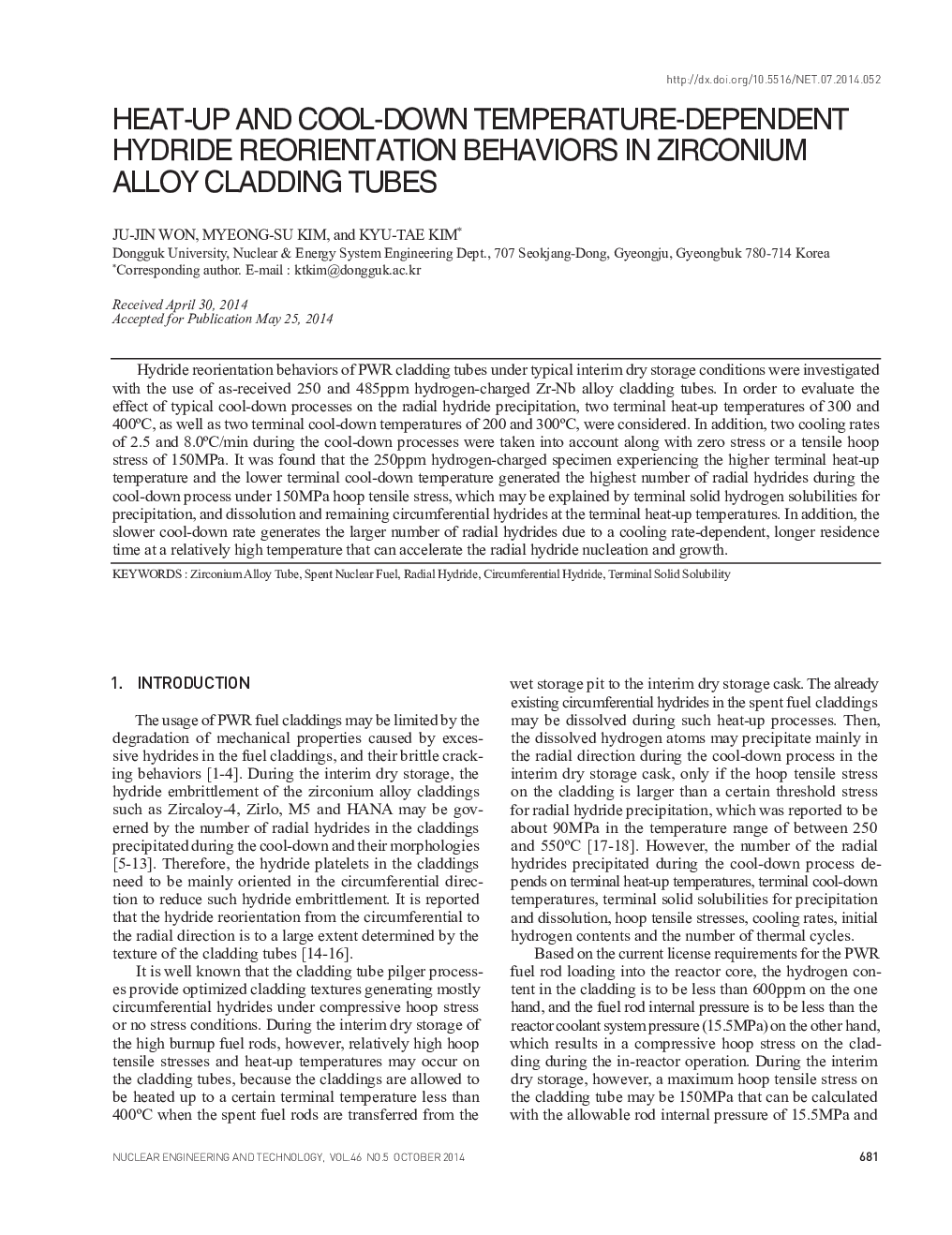| کد مقاله | کد نشریه | سال انتشار | مقاله انگلیسی | نسخه تمام متن |
|---|---|---|---|---|
| 1740212 | 1017330 | 2014 | 8 صفحه PDF | دانلود رایگان |

Hydride reorientation behaviors of PWR cladding tubes under typical interim dry storage conditions were investigated with the use of as-received 250 and 485ppm hydrogen-charged Zr-Nb alloy cladding tubes. In order to evaluate the effect of typical cool-down processes on the radial hydride precipitation, two terminal heat-up temperatures of 300 and 400°C, as well as two terminal cool-down temperatures of 200 and 300°C, were considered. In addition, two cooling rates of 2.5 and 8.0°C/min during the cool-down processes were taken into account along with zero stress or a tensile hoop stress of 150MPa. It was found that the 250ppm hydrogen-charged specimen experiencing the higher terminal heat-up temperature and the lower terminal cool-down temperature generated the highest number of radial hydrides during the cool-down process under 150MPa hoop tensile stress, which may be explained by terminal solid hydrogen solubilities for precipitation, and dissolution and remaining circumferential hydrides at the terminal heat-up temperatures. In addition, the slower cool-down rate generates the larger number of radial hydrides due to a cooling rate-dependent, longer residence time at a relatively high temperature that can accelerate the radial hydride nucleation and growth.
Journal: Nuclear Engineering and Technology - Volume 46, Issue 5, October 2014, Pages 681–688